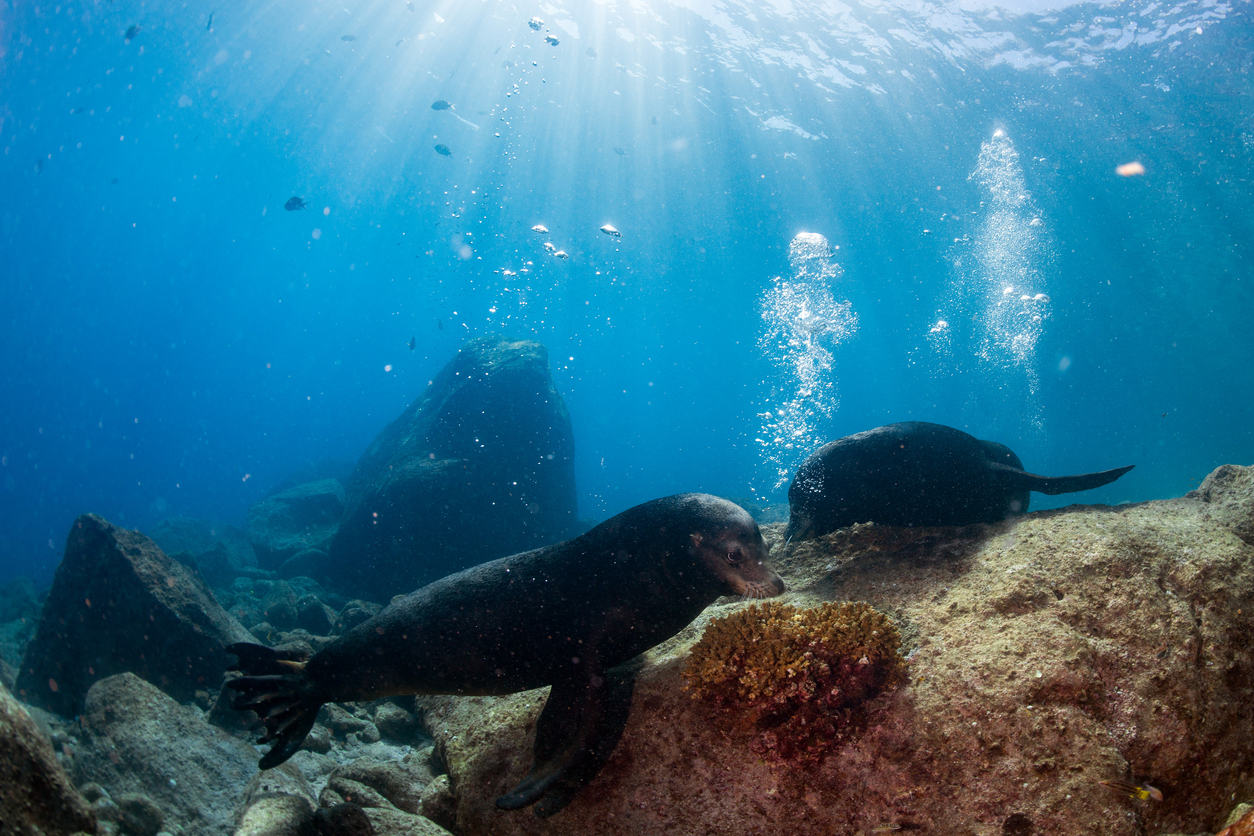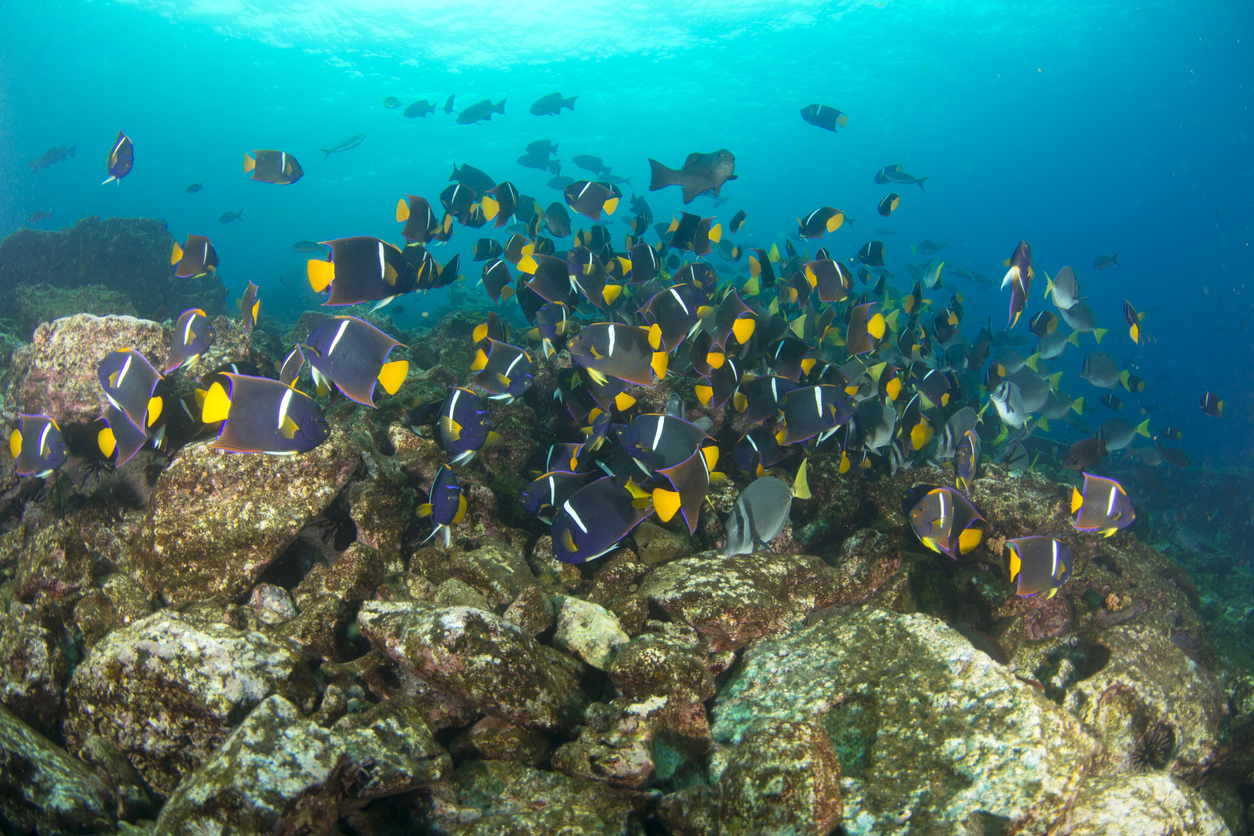03/03/2017

We’re always looking to take our guests below the surface of every destination we visit throughout Latin America, showing you a side of the cities, villages, jungles, mountains, and more that many travelers regrettably miss and one of the most enthralling ways to experience Southern Explorations’ destinations like Ecuador, Brazil, Panama, and Colombia is to literally look below the surface by doing some snorkeling.
While there’s no denying scuba diving takes you deep into worlds - like the Galapagos - that few people ever get to see, diving also requires a good amount of training, and legendary dive experiences – like joining the 16-passenger Galapagos Sky for full-day excursions - offer diving-intensive itineraries that may not appeal to the traveler more interested in peering into the worlds below the surface as a complementary element to their overall immersive travel experience.
That’s what makes snorkeling so ideal, and there’s no experience necessary! Just ask our own Southern Explorations travel expert Marisa. While Marisa knows all there is to know when it comes to getting the most adept scuba divers into the best dive sites, she also knows first-hand how little experience and skill you need to snorkel these breathtaking destinations.
“One of my favorite stories from the many times I’ve experienced the Galapagos was when I took my aunt along for the trip,” says Marisa. “The important thing to keep in mind is that my aunt CAN’T SWIM! But that didn’t stop her from getting in some quality snorkeling during the trip. We simply made sure to equip her with floatation devices, and then I spent some time helping pull her around, and she had an absolute blast looking into this amazing world she’d never been able to witness before. It was really eye-opening. I think that gives you a pretty good idea just how accessible and easy it is to add this rewarding element to your Southern Explorations experience, as long as you’ve got someone willing to help pull you around, of course.”

As simple as snorkeling can be, we still want to give you a few handy snorkeling terms so that even if it is your first time looking into the astonishing world of Corales del Rosario y San Bernardo Natural National Park in Colombia, Brazil’s Sucuri River, or Panama’s Isla Bastimentos Marine National Park, you can still sound like an old pro.
Snorkel: The obvious one. It’s the tube like piece of equipment that allows you to keep breathing while you swim around face down in the water.
Snorkel Keeper: This is the device used to attach your snorkel to your mask (sometimes they’re one in the same)
Fins: Simply put, these are what you strap to your feet to help propel you through the water. Some people call them flippers, but in the snorkeling world, they’re your fins.
Mask: This one is pretty self-explanatory, but absolutely necessary. Masks consist of one or more lenses, a face-skirt, and an adjustable strap. Fun fact about your snorkeling mask: objects viewed underwater while wearing your mask appear about 25 percent closer than objects seen through the mask in an air environment, meaning you’re going to see everything as if it’s even closer and more detailed than it really is.
Blade: The flat paddle-like part of your fin that helps propel you through the water when kicking.
Face-skirt: This is the part of your mask, often made of silicone or rubber, that holds tight to your face while you’re snorkeling to keep water from getting into your mask.
Kicking: The action used to move you around in the water. There are several different styles of kick.
Dolphin kick: A swimming style where you kick your fins in unison on the downward and upward strokes, much like how a dolphin swims with its tail.
Flutter kick: This is how most people kick their fins when snorkeling. It involves little to no bending of the knees and your legs move downwards and upwards in opposition (when one goes up, the other goes down).
Frog kick: This swimming style involves keeping your fins together with your toes pointed and your knees bent to bring the fins close to your torso (like a frog). You then separate your fins by bending your ankles, and thrust the fins by straightening your legs until they are back in their original position. This one takes some energy, but if you get it down you can motor through the water.
Submitted by Eric on Fri, 03/03/2017 - 2:22pm

We’re always looking to take our guests below the surface of every destination we visit throughout Latin America, showing you a side of the cities, villages, jungles, mountains, and more that many travelers regrettably miss and one of the most enthralling ways to experience Southern Explorations’ destinations like Ecuador, Brazil, Panama, and Colombia is to literally look below the surface by doing some snorkeling.
While there’s no denying scuba diving takes you deep into worlds - like the Galapagos - that few people ever get to see, diving also requires a good amount of training, and legendary dive experiences – like joining the 16-passenger Galapagos Sky for full-day excursions - offer diving-intensive itineraries that may not appeal to the traveler more interested in peering into the worlds below the surface as a complementary element to their overall immersive travel experience.
That’s what makes snorkeling so ideal, and there’s no experience necessary! Just ask our own Southern Explorations travel expert Marisa. While Marisa knows all there is to know when it comes to getting the most adept scuba divers into the best dive sites, she also knows first-hand how little experience and skill you need to snorkel these breathtaking destinations.
“One of my favorite stories from the many times I’ve experienced the Galapagos was when I took my aunt along for the trip,” says Marisa. “The important thing to keep in mind is that my aunt CAN’T SWIM! But that didn’t stop her from getting in some quality snorkeling during the trip. We simply made sure to equip her with floatation devices, and then I spent some time helping pull her around, and she had an absolute blast looking into this amazing world she’d never been able to witness before. It was really eye-opening. I think that gives you a pretty good idea just how accessible and easy it is to add this rewarding element to your Southern Explorations experience, as long as you’ve got someone willing to help pull you around, of course.”

As simple as snorkeling can be, we still want to give you a few handy snorkeling terms so that even if it is your first time looking into the astonishing world of Corales del Rosario y San Bernardo Natural National Park in Colombia, Brazil’s Sucuri River, or Panama’s Isla Bastimentos Marine National Park, you can still sound like an old pro.
Snorkel: The obvious one. It’s the tube like piece of equipment that allows you to keep breathing while you swim around face down in the water.
Snorkel Keeper: This is the device used to attach your snorkel to your mask (sometimes they’re one in the same)
Fins: Simply put, these are what you strap to your feet to help propel you through the water. Some people call them flippers, but in the snorkeling world, they’re your fins.
Mask: This one is pretty self-explanatory, but absolutely necessary. Masks consist of one or more lenses, a face-skirt, and an adjustable strap. Fun fact about your snorkeling mask: objects viewed underwater while wearing your mask appear about 25 percent closer than objects seen through the mask in an air environment, meaning you’re going to see everything as if it’s even closer and more detailed than it really is.
Blade: The flat paddle-like part of your fin that helps propel you through the water when kicking.
Face-skirt: This is the part of your mask, often made of silicone or rubber, that holds tight to your face while you’re snorkeling to keep water from getting into your mask.
Kicking: The action used to move you around in the water. There are several different styles of kick.
Dolphin kick: A swimming style where you kick your fins in unison on the downward and upward strokes, much like how a dolphin swims with its tail.
Flutter kick: This is how most people kick their fins when snorkeling. It involves little to no bending of the knees and your legs move downwards and upwards in opposition (when one goes up, the other goes down).
Frog kick: This swimming style involves keeping your fins together with your toes pointed and your knees bent to bring the fins close to your torso (like a frog). You then separate your fins by bending your ankles, and thrust the fins by straightening your legs until they are back in their original position. This one takes some energy, but if you get it down you can motor through the water.














